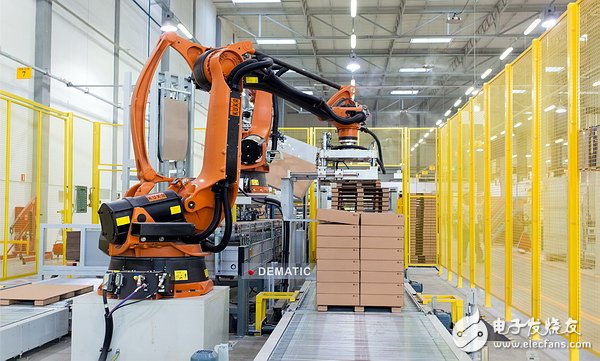China's industrial robot market demand segment or investment opportunities
Recently, the world's robot giant Yaskawa Electric Co., Ltd. decided to increase the investment in Wujin by increasing the capital of the Wujin High-tech Zone project in Changzhou by 45 million US dollars.
The research of robotics began in the middle of the 20th century, mainly based on the rapid development of computer technology and automation technology. From a global perspective, the industrial robot industry is in the ascendant and relatively small in scale. Most of its applications are concentrated in specific industries such as automobiles and electronics, and are developing in the direction of intelligence, modularization and systematization.

China's industrial robot market demand segment or investment opportunities
As we all know, the global industrial robots currently form four families of Japan FANUC, Yaskawa Electric, Germany KUKA, and Swiss ABB. These companies occupy half of the global robot industry and firmly grasp the Chinese market.
In recent years, as China's labor costs have doubled, the implementation of the "Made in China 2025" strategy, the transformation of enterprise manufacturing models is imperative, and the industrial robot industry has ushered in a historic opportunity for industrial development. Therefore, the capital increase of Yaskawa Electric is also intended to seize more Chinese market. Then, what is the current status and future development of China's robotics industry in China's industrial robot market?
The CIC consultant gave the answer in the “In-depth Research and Investment Prospect Forecast Report of China Industrial Robot Industry 2017-2021†(referred to as “Predictive Reportâ€).
Industry sales analysisThe "Predictive Report" believes that: strong demand has prompted the rapid growth of sales of industrial robots in China. In 2001, China's industrial robot sales volume was only 700 units. By 2015, China's industrial robot sales increased rapidly to 66,000 units, an increase of 56% from the 57,100 units in 2014, with an average annual growth rate of 50%. In 2013, China's industrial robot sales surpassed Japan for the first time, becoming the world's largest producer and seller of industrial robots. In 2015, the global sales of industrial robots totaled 247,000 units. China's industrial robot sales accounted for 26.7% of global sales, more than a quarter of the global total. It is estimated that by 2020, the sales volume of industrial robots in China will increase to 197,700 units.
Industry stock analysisFrom the perspective of global industrial robot ownership distribution, in 2013, 48% of industrial robot stocks were concentrated in Japan, the United States, Germany, South Korea and China, with stocks accounting for 23%, 14%, 12%, 12%, and 10%, respectively. It is expected that by 2018, the global industrial robot possession will increase, but the pattern will not change much.
In recent years, the number of industrial robots in China has accumulated year by year. In 2001, there were only 1,630 industrial robots in China. As of 2014, China's industrial robots have grown to 189,000 units, with an average growth rate of 45%. The industrial demand for industrial robots in China will continue to increase, and the scale of industrial robots will be further expanded.
Industrial Investment Opportunity AnalysisFrom the perspective of industrial robot investment opportunities, the first is the motion controller market. The market for China's medium and large-sized enterprises and multinational companies is relatively mature. The overall size of China's market is about 7 billion yuan, and there will be an annual growth rate of 11% in the next few years. Second, system integrators invest in opportunities, the whole machine accounts for one-third of the market, and two-thirds in the software system integration market.
Chinese system integrators have become more "red seas" in the industrial chain. Price competition will reduce gross profit, and the system integration industry will face a wave of reshuffle in the future. Investment opportunities can be viewed from two aspects. First, medium- and large-scale enterprises have the opportunity to get involved in upstream key components, forming vertical integration of the industry chain; secondly, from single robot workstations to manufacturing transformation robots.
In addition, the "Predictive Report" shows that because there are too many non-standardized products for industrial robots in each industry, cost control is now a bottleneck. In the future, how to increase demand mining in industries with greater potential, and make bigger efforts in segmentation areas. Strong is also an investment opportunity.
EDP is gradually replacing the existing low voltage differential signal (LVDS) transmission interface, especially in FHD(1,920x1,080 or 1,920x1,200) or panel (UHD) that exceeds FHD resolution.
EDP can dynamically control the refresh frequency of the display panel, which is designed to reduce power consumption when displaying a still picture. In still images, the panel refresh rate can be reduced from a normal 60 images per second to any frequency that does not produce abnormal or flickering images. Reducing the refresh rate reduces power consumption and extends battery life, with some panels down to 40fps or less.
Another application that USES different display refresh rates is when playing movies or games. In game mode, the screen is often calculated by the graphics computing engine before being displayed, and there will be a delay time in the middle. In this case, the refresh frequency of the panel can be dynamically adjusted to make the screen display smooth, without distortion and delay. When playing the movie, the 24FPS picture can be adjusted to 48FPS, so as to eliminate the situation that the picture is not smooth due to the 3:2 pull-down in the traditional 60FPS mode.
Through AUX channel, eDP can control the following functions of the display panel:
Turn on or off the backlight
Backlight brightness adjustment and backlight PWM frequency are adopted.
Turn on or off dynamic backlight adjustment.
Color engine, jitter algorithm or insert black screen for adjustment.
Edp To Dp Cable,Aclu2 Edp Cable,Cg511 Edp Cable,Edp To Displayport Adapter
Tonya Display Limited , https://www.tydisplay.com